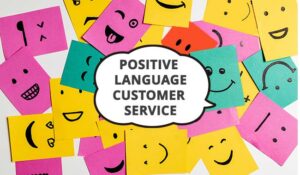Helen Billingham of Enghouse Interactive discusses the role of video within the contact centre of the future.
During the pandemic, the already rising popularity of video has accelerated. Video now plays a much larger role in our private lives as we rely on it to maintain socially distanced relationships with friends and family.
It is also now central to our working day, where people are embracing video for meetings and team collaboration.
Demonstrating this, the number of UK adults making video calls has doubled since lockdown began, according to Ofcom, while Gartner predicts that global spending on cloud-based web conferencing solutions will grow 24.3% in 2020.
And the COVID-19 era has produced some unexpected, innovative examples of how video is being used, from doctors switching to remote video consultations, through to online dating and even live video wedding ceremonies.
Part of the reason that video has been so widely embraced is that most people have a way of accessing it, whether through their smartphones, PCs or tablets.
Video and the Contact Centre
So, with consumers become increasingly comfortable using video, it feels only natural that the technology is more widely extended into customer service.
After all, video helps to create empathy, enabling more engaged interactions that can ultimately produce an improved customer experience.
At the same time, the rise of automation and self-service has meant that many routine queries no longer require a live agent to interact with the customer.
This means that agents need to handle more complex queries or focus on difficult interactions where video can provide a richer, more personal, two-way interaction.
Obviously using video in the contact sector delivers benefits for companies and for their customers, but it also comes with some potential challenges that need to be overcome.
3 Key Benefits for Customers
1. Replicates Face-to-Face Interactions
One obvious benefit of video is that it replicates face-to-face interactions without customers and agents having to be at the same location.
High-quality video means that consumers can see who they are speaking to and interact using non-verbal cues and gestures, giving a richer experience than just voice on its own.
2. Allows Customers to Show Agents Their Problem
If a picture is worth a thousand words, then a moving picture is clearly worth even more. With video, callers can show a product to an agent and discuss an issue they might be having with it – or point to where it’s damaged.
By the same token, agents can use video to demonstrate how to do things, such as assembling a product or updating the software on it. This is clearly much easier than having to send static images by email or rely on descriptions given over the phone.
3. Increases Convenience for Consumers
The other big advantage is that video is hugely convenient. For example, customers no longer need to visit a physical shop if they want to explain a complex query which requires showing the product – or to receive detailed technical advice.
They can save time and effort by getting their point across from their own home using video.
3 Benefits for Businesses
1. Delivers Tangible ROI
By putting the human touch back into digital interactions, video can help businesses improve the customer experience. Video can make it easier for trained agents to build a rapport with customers, which can help to defuse emotionally charged conversations and prevent customers from terminating their contract or closing their account.
Showing the ROI video provides, Dekra Claims and Expertise in the Netherlands generated a 50% increase in customer satisfaction when it implemented a video claims process.
2. Drives Greater Productivity
Video has the power to enhance productivity. The richer interactions it offers give agents the ability to resolve problems faster, allowing them to handle more queries without impacting satisfaction.
It also has the benefit of improving staff utilisation and efficiency by making it easy to seamlessly bring in subject-matter experts or trouble-shooters (wherever they are located) to handle specialist customer queries.
3. Demonstrates Professionalism and Reinforces Brand Values
Customers want to know that they are dealing with agents that really know what they are doing and a brand that values its customers. Video gives agents an opportunity to really shine by demonstrating their skills and expertise.
By giving agents a chance to show that they are efficient and polite professionals with superior customer-handling capabilities, live on camera, video conveys the professionalism of a brand like no other medium.
The Challenges to Overcome for Successful Video Customer Service
However, as well as the benefits, businesses need to focus on key areas when implementing video within the contact centre.
1. Developing Agents With Different Skills
Managing video calls requires different skills and strengths to responding to customers by mail or phone. So, a contact centre that wants to use video might need to rethink its staff development and training programmes.
For example, agents that are on video will need to learn to stay alert to the conversation at all times, as well as being able to demonstrate empathy through their facial features.
They will also need to pay close attention to their on-camera appearance and ensure they have a professional background behind them, as all these have an impact on brand image.
2. Ensuring Security and Compliance
Security becomes even more important when interacting with customers on video, especially if agents are at home.
They need to be sure that personal or sensitive data cannot be seen on screen or overheard by anyone nearby, for example.
And just as with phone calls, companies handling sensitive customer data via video need their technology to be able to record interactions to be PCI compliant.
3. Integrating Video for a Seamless CX
As with all contact centre channels, you need to ensure that video is fully integrated with all the other parts of the contact centre. To create a seamless customer experience, agents should be able to easily escalate between video and other channels.
And they should be able to see a single view of all the interactions in the customer journey, both those parts that happened on video and those that took pace over email or phone, for example. Video cannot be treated as a standalone channel or it will turn into a silo.
During the pandemic in 2020, we have seen video communication go mainstream across many aspects of our lives.
With this in mind, now is the time to take another look at the benefits video delivers and the essential practical considerations for incorporating it into your contact centre.
This blog post has been re-published by kind permission of Enghouse Interactive – View the Original Article
For more information about Enghouse Interactive - visit the Enghouse Interactive Website
Call Centre Helper is not responsible for the content of these guest blog posts. The opinions expressed in this article are those of the author, and do not necessarily reflect those of Call Centre Helper.
Author: Enghouse Interactive
Published On: 14th Dec 2020 - Last modified: 15th Dec 2020
Read more about - Guest Blogs, Enghouse Interactive






 Enghouse Interactive delivers technology and expertise to help bring your customers closer to your business through its wide range of customer contact solutions.
Enghouse Interactive delivers technology and expertise to help bring your customers closer to your business through its wide range of customer contact solutions. 








